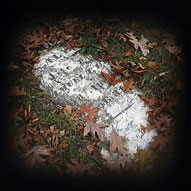
For a study in subterranean culture, look no deeper than Richard Bak, author of
Boneyards: Detroit Underground. In his explorations this week, Bak unearths the migration of bodies from Detroit to suburban cemeteries, a burial ground absorbed by an auto plant, and visits a pet graveyard. RIP, Fido.
Post 2: Silent City
Posted By: Richard Bak
Posted: 11/5/2010
Metropolitan Detroit is home to more than a hundred different ethnic groups, a remarkable diversity reflected in the variety of surnames carved into the gravestones at local cemeteries. Names like Vernier, O'Brien, Adamski, Schroeder, Giovanni, Lopez, and Hazimi indicate the different immigrant groups that have settled in Detroit over the years. The phrase "Rest in Peace" can found in such languages as Polish (Spoczywaj w Ookoju), Hungarian (Nyugodjék Békében), and Spanish (Descansa en Paz).
One of the most interesting but least accessible of the roughly 800 graveyards in southeastern Michigan is Beth Olem Cemetery, an abandoned site swallowed up by the General Motors Detroit/Hamtramck Assembly plant (better known as the Poletown plant). Beth Olem—which means "house of the world"—was established during the Civil War to service Congregation Shaarey Zedek. Most members were German and Polish Jews who settled on the near east side and worked as dry-goods peddlers. Beth Olem Cemetery (also called the Smith Street Cemetery) was the second Jewish burial ground established in Detroit; the first was a half-acre section established by Temple Beth El in a corner of Elmwood Cemetery in 1851. At the time Beth Olem opened, the area was rural, but over the next several decades, residences, small businesses, and Chrysler's Dodge Main factory sprang up around it.
In the early 1980s, 465 acres of the Poletown neighborhood were razed to make way for a Cadillac assembly plant. Despite the protests and lawsuits, GM and the cities of Detroit and Hamtramck successfully used the principle of eminent domain to displace 1,300 homes, 140 businesses, six churches, and a hospital. However, the automaker was prevented by state law from removing Beth Olem Cemetery, which by then had been dormant for decades as Jewish families moved to other parts of Detroit and the suburbs. Today, the 2.2-acre site is minimally maintained, regularly floods, and is kept off-limits to the general public.
There are an estimated 1,400 people interred at Beth Olem Cemetery, with the oldest legible tombstone dating back to 1876 and the most recent burial occurring in 1948. A number of the gravestones have been worn smooth by time and the elements, including one intriguing tablet from the early 1900s. There is no name, and there are no dates, just the cracked ceramic portrait of a woman whose image was captured in the prime of life. Her anonymity invites the inevitable questions. Who is she? How did she live? How did she die? What could she tell us of everyday life in Detroit a century ago? Even in the unlikely event that somebody today would remember her and care enough to visit, the opportunities are extremely limited. The cemetery, managed for Congregation Shaarey Zedek by Clover Hill Cemetery in Royal Oak, is open a total of just eight hours each year: from 10 a.m. to 2 p.m. on the Sundays preceding Rosh Hashana and Passover.